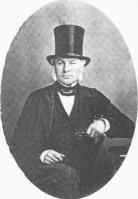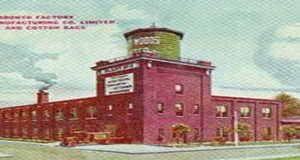
Samuel Jarvis
In an editorial written for a local newspaper, The Canadian Freeman, dated May 26 1831 Francis Collins writes the following:
“Houses of infamy are scattered thro’ every corner of the town and one of them had the hardihood to commence operations next door to our office and if not checked will suffer the wrath of God…”
That is how York (now Toronto) wanted to be perceived: Terrible things will happen to you if you don’t play nice.
On the west side of Market Lane Park (Front and Jarvis) where the entrance to the Rainbow Cinema now stands, there was an establishment called Frank’s Tavern.
In that tavern in 1820 York’s theatrical debut made up entirely of local actors took place when they put on a production of School for Scandal.
Frank’s was the place to go if you wanted to be part of the in crowd.
Men and women dressed in the latest French fashions all gathered for a beer-drenched evening of Shakespeare sonnets recited by well-inebriated actors astride table tops. In a lovely irony, it occurred on the same site where today we line up to buy our movie tickets.
A night at Frank’s was the topic you’d talk about the next day to your neighbour as you went about slaughtering your pig. However not everyone was enthralled at having a gasp theatre in our town.
In 1833, a group of actors descended upon our town and preceded to put on a performance at Franks that evolved into a wild party lasting well into the wee hours of the morning that caused William Lyon Mackenzie to write the following in his newspaper:
“…Our town has been infested several weeks past with a company of strolling players issuing their handbills of monkey-shines purporting to be theatrical performances. Clear the vagabonds out at once and free the town from a nuisance!”
Franks Hotel was also the scene of a rather bizarre story of etiquette taking to the extreme. Newly arrived Lady Mary Willis lived at Franks Hotel while waiting for her house to be built and wouldn’t leave her room until she was properly introduced to the other aristocratic ladies of the town. The other ladies wouldn’t visit her because they felt she should make the first move. And so she sat in her second-floor room in the heat of the summer wilting away while she looked daily for an introduction card.
As she sat in her chair overlooking the goings on below of the market square, everyone in the town from lowly stable boys to the landed gentry knew she was there but no one would talk about it.
As the summer was turning into fall and with no one making the first move it would take the aristocratic gentlemen of the town doing some heavy research from the book Established Etiquette in the Colony to bring the upper class women and Lady Mary together by way of a simple introduction.
When she did finally emerge after months of seclusion and despair, it was if nothing had happened and tea was served.
Protocol and manners were everything to upper classes of early York even if it meant isolation or death.
In 1817 early resident Samuel Jarvis owed John Ridout money (he owed alot of people money) and after he refused to pay by saying he was insulted at the very mention of being called a debtor, Jarvis challenged Ridout to a duel.
As tradition allowed they met at dawn the next day at what’s now the south-east corner of Yonge and College.
Ridout fired early but missed, followed by confusion as no one was sure what should happen next. After a huddled discussion it was decided that honour should dictate that Ridout stand still while Jarvis took his shot.
Jarvis did, and killed Ridout instantly. Honour aside, it was still illegal to fire guns at one another and Jarvis was charged with murder. However, because all the official procedures of a duel had been met Jarvis was acquitted and it didn’t hurt that the gentlemen’s agreement of the day was to absolve all duelers. This was regarded as the last so-called “semi-legal” duel in Toronto.
During the first half of the 19th century the area around St. Lawrence Market at Front and Jarvis flourished with theatres, taverns, brothels, hotels, coffee houses, stables, gambling dens and a small museum that consisted of a stuffed eagle under a glass bell jar.
While almost everything has disappeared from that time, John Ridout’s tombstone still graces the doorway to St. James Cathedral, mounted on the wall that reads in part: “In memory of John Ridout, engaging manners and nobleness of mind gave early promise of future excellence…but a Blight came and he was consigned to an early Grave on the 12th day of July 1817, aged 18. Deeply lamented by all who knew him.”
No mention of course that he was shot and murdered by Samuel Jarvis, as that would have been in bad manners. Samuel Jarvis died in 1857 at the age of 65.
Bruce Bell July 2016
 TheBulletin.ca Journal of Downtown Toronto
TheBulletin.ca Journal of Downtown Toronto

